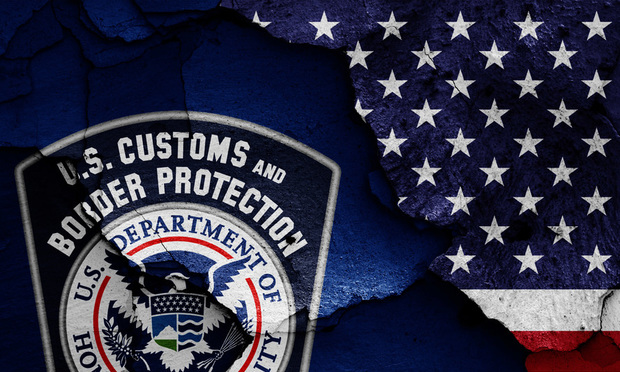Trump's arsenal for a trade war with China
The potential of a U.S.-China trade conflict has worried investors over the past three months, with the risk that President Donald Trump may implement his campaign threats of imposing tariffs on Chinese exports and spur a global economic crisis.
He has repeatedly pledged to confront China more aggressively on trade and economic issues, including branding the Asian country a currency manipulator and levying fresh tariffs on its goods.
While some of that rhetoric has been toned down slightly since Trump’s victory in the U.S. election, there is a real risk of a trade battle that markets have to prepare for.
Against this backdrop, President Trump has several options for increasing tariffs against a foreign country. These six laws could allow him to launch the conflict, if he does decide to confront China:
- New legislation (Act of Congress)
- Section 301 of the Tariff Act of 1974
- Section 122 of the Trade Act of 1974
- Section 232(b) of the Trade Expansion Act
- Trading with the Enemy Act of 1917
- International Emergency Economic Powers Act
On March 14, U.S. Trade Representative (USTR) nominee Robert Lighthizer made combative remarks about the WTO’s inability to “deal effectively for a country like China”, vowing to get tough on trade abuses by its government. Hours later, Chinese Premier Li Keqiang told reporters at the close of this year’s National People’s Congress that China has no intention of waging a trade war with the U.S., reaffirming a recent statement from the PRC Commerce Minister on the sidelines of the parliamentary session that such a dispute would only cause pain.
These apparent frictions point to a predictable anxiety about the possible impending measures that the Trump Administration could take to increase duties or taxes on goods imported into the United States. Trump has vowed to use “every lawful presidential power” against allegedly illegal Chinese trade practices and does indeed have several available options for raising tariffs, as well as a “border adjustable tax” system proposed by a Congress Committee.
Credit Suisse Group has written that potential boycotts of American products in China could hit brands including Nike, General Motors, Ford Motor, and Tiffany & Co, while U.S. sanctions could put Chinese electronics exporters such as Lenovo Group and ZTE Corp. under pressure, Bloomberg reported in January.
Presidential power to impose additional tariffs
Generally, the U.S. President cannot increase tariffs via executive action. Article 1, Section 8 of the U.S. Constitution gives Congress the sole authority to impose tariffs and, as such, this authority would have to be expressly delegated to the President by Congress. However, certain other Acts do authorize the President to exercise this authority under limited circumstances.
In every case, however, increased duties must be consistent with the United States’ obligations under the World Trade Organization (WTO) Agreements, such as “Most Favored Nation” and “Tariff Bindings”. Most Favored Nation embodies a principle of non-discrimination whereby a member cannot place a tariff of 10% on apples from China while levying 5% on apples from Japan. Tariff Bindings refer to Articles I and II of the General Agreement on Tariffs and Trade (GATT) where WTO members cannot impose tariff rates beyond an agreed ceiling.
In case the tariff imposed by U.S. is inconsistent with the WTO agreement, the WTO can authorize retaliation including: (a) increased tariffs totaling the value of the violation; (b) sanctions on intellectual property; and (c) restrictions on services.
Option 1: New legislation
President Trump could work with Congress to enact a law increasing tariffs against goods of a specific country (such as imposing a 45% duty on goods from China, which he has promised throughout his campaign trail). However, such a tariff measure will violate GATT Articles I and II, triggering the WTO dispute settlement mechanism and eventually resulting in retaliatory measures from China that would adversely affect U.S. exports.
In this scenario, the WTO would authorize China to impose retaliatory tariffs on U.S. exports to China equal to $208 billion ($463 billion [value of 2016 Chinese imports] x 45% [proposed tariff]). As U.S. exports to China are roughly $116 billion a year, the retaliatory duty rate imposed on U.S.-originated goods could be nearly 200% ad valorem. China could also prevent U.S. firms from getting patents in China or prevent U.S. banks from providing financial services in China.
Option 2: Section 301 of the Tariff Act of 1974
Section 301 of the Tariff Act of 1930 authorizes the USTR to investigate foreign government policies or practices that:
- deny rights of U.S. persons and interests under international agreements; or
- unreasonable, unjustifiable, or discriminatory foreign government practices that burden or restrict U.S. commerce.
This statutory authorization may be used to address any unfair trade practice (e.g. market access or intellectual property). The USTR must first seek consultations with the foreign government. If there is no resolution, the USTR is authorized to:
- suspend concessions given under trade agreements;
- impose duties or other import restrictions (which may constitute a suspension of concessions under one or more trade agreements);
- impose fees or restrictions on services;
- enter into agreements with the subject country to eliminate the offending practice or to provide compensatory benefits for the U.S.; and/or
- restrict service sector authorizations.
The law does not require WTO authorization to impose tariffs or other measures, and thus the President can act unilaterally. However, the WTO has already ruled that taking any such actions against other member countries without first securing approval under the WTO Understanding on Rules and Procedures Governing the Settlement of Disputes is, itself, a violation of the WTO Agreement.
Option 3: Section 122 of the Trade Act of 1974
Section 122 addresses the President’s ability to respond to “fundamental international payments problems.” It authorizes the President to address “large and serious United States balance-of-payments” deficits by imposing temporary import surcharges (not exceeding 15%), imposing temporary import quotas or both for up to 150 days, either on a nondiscriminatory basis or against select countries with large balance of payments surpluses.
Option 4: Section 232(b) of the Trade Expansion Act
Section 232(b) provides the U.S. Department of Commerce (DOC) with authority to investigate imports that threaten “national security.” The DOC has 270 days to complete its investigation and submit a report to the President. There is no limit prescribed for either the quantum of tariffs or the length of time they can be imposed.
The application of this provision turns on the definition of a threat to national security. In 2001, the DOC conducted a § 232 investigation on the effects of imports of iron ore and semi-finished steel on the national security of the United States. In that case, the DOC adopted a broad definition of “national security” explaining:
It is clear that, at a minimum, an assessment of the United States’ “national security” requirements must include a military or “national defense” component…
In addition to the satisfaction of national defense requirements, the term “national security” can be interpreted more broadly to include the general security and welfare of certain industries, beyond those necessary to satisfy national defense requirements, that are critical to the minimum operations of the economy and government (critical industries).
The DOC then identified two ways in which imports could threaten national security.
- if the U.S. is excessively dependent on imports from unreliable or unsafe sources, and thereby is vulnerable to a supply disruption.
- if they fundamentally threaten the viability of U.S. industries and resources needed to produce domestically goods and services necessary to ensure U.S. national security.
Ultimately, in this case, the DOC found that imports did not threaten national security because “[t]here is neither evidence showing that the United States is dependent on imports of iron ore or semi-finished steel, nor evidence showing that such imports fundamentally threaten the ability of domestic producers to satisfy national security requirements.”
The future use of a § 232 investigation by the Trump Administration is a very real possibility. However, using these investigations to achieve higher tariffs on a particular product would likely result in challenges at both the U.S. courts and the WTO. If challenged at the WTO, the United States could claim the little-used GATT Article XXI Security Exceptions, which permit a member country to depart from WTO obligations in “time[s] of war or other emergency in international relations.” Employing this provision in this manner would be unprecedented and could trigger retaliatory actions by affected countries.
Option 5: Trading with the Enemy Act of 1917 (TWEA)
TWEA, enacted when the U.S. was entering World War I, permits the President to regulate all forms of international trade, travel, investment, and finance during war time. It has been extended to cover national emergencies as well. The current U.S. embargo on trade with Cuba is authorized under TWEA. While the Act does not specifically identify the imposition of increased duties, at least one federal appeals court has held that TWEA delegates to the President, for use during war or during national emergency only, the power to impose duties on imports. In United States v. Yoshida International, Inc., 526 F.2d 560, 573 (C.C.P.A. 1975), President Nixon had imposed a 10% surcharge on zippers from Japan. The “national emergency” in that case was the Korean War, which ended in 1953, but for which a state of national emergency was still in place.
TWEA has not been used since 1971 to increase import duties but it remains possible for this statue to be used to increase tariffs against a specific country.
Option 6: International Emergency Economic Powers Act (IEEPA)
IEEPA was passed in 1976 as a companion to the TWEA.
§ 1701. Unusual and extraordinary threat; declaration of national emergency; exercise of Presidential authorities
(a) Any authority granted to the President by Section 1702 of this title may be exercised to deal with any unusual and extraordinary threat, which has its source in whole or substantial part outside the United States, to the national security, foreign policy, or economy of the United States, if the President declares a national emergency with respect to such threat.
(b) The authorities granted to the President by Section 1702 of this title may only be exercised to deal with an unusual and extraordinary threat with respect to which a national emergency has been declared for purposes of this chapter and may not be exercised for any other purpose.
50 U.S.C. § 1701 of IEEPA permits the President to, among other things, “investigate, regulate, or prohibit…the importing or exporting with respect to any property, subject to the jurisdiction of the United States.” It requires the President to consult with Congress, but does not require Congressional approval. IEEPA is currently the statutory authorization for sanctions against Iran, Syria and Russia.
However, rampant use of IEEPA would likely trigger WTO challenges.
In addition, there is likely to be an uptick in other trade remedy and enforcement mechanisms, including: (1) self-initiation of new anti-dumping/countervailing duty cases; (2) anti-circumvention proceedings; and (3) safeguards (duties or quotas). All of these measures are imposed only after an investigation by the Department of Commerce and/or International Trade Commission, in which interested parties can participate. Since the agencies’ final decisions are subject to judicial review, these trade measures are not easily influenced by the President.
Retaliation
The six options described above are the potential avenues that the President could take to increase tariffs on imports from a specific country. However, most unilateral action would almost certainly violate the WTO, triggering retaliation from the affected countries and filing complaints with the WTO.
A country like China would definitely resort to a number of countermeasures. For one, it would file a complaint with the WTO dispute settlement body, alleging the U.S.’ contravention of its WTO obligations and impairment of China’s rights under that agreement. This would set off a long drawn process, beginning with consultation and followed by panel and possible appellate body decisions and thereafter, possible sanctions against the U.S. However, WTO litigation can drag on for years and the remedies provided are prospective only. In other words, there would be no punishments by the WTO against the U.S.’ past unlawful actions.
Therefore, it is quite likely that in order to pressurize the U.S. in the shorter term, China will most likely initiate its own unilateral set of countermeasures, such as raising tariffs or quotas against U.S. origin imports.
On account of these actions and counteractions, exporters from both nations, as well as their end-users, would be prejudicially affected and there will be a chilling effect on U.S.-China trade in general. As a result, we may witness global trade morphing into trading within regional blocks of countries , which would be a real casualty of this so-called trade war.
Border adjustable tax proposal
A proposal by the House Ways and Means Committee to revise Income Tax laws—such as the “Border Adjustment Tax” (BAT)—dramatically affects importers and retailers in the United States.
Currently, corporations are taxed in the U.S. on their profits, which is revenue minus costs, at a marginal rate of 35%. The proposed BAT changes the corporate income tax in five ways:
- Tax rate lowered to 20%.
- Instead of depreciating their capital investments, businesses will be able to write off or expense them in the way in which they were purchased.
- No tax on overseas profits.
- No interest deduction allowed as a business expense.
- The corporate tax would be “border adjusted”.
How “border adjustment” works
Under the plan, the revenue from sales to non-residents would not be taxable. The cost of goods purchased from non-residents would not be deductible. The following illustration suggests that U.S. taxes on an imported sweater could go from $1.75 to $17.00.
A U.S. distributor buys a sweater from its overseas supplier for $80. The U.S. distributor incurs additional $15 in other expenses and sells the sweater at retail for $100.
Under current laws, tax will be levied on $5 profit (100 – 80 – 15 = 5). At 35% tax rate on the $5 profit, the tax will be $1.75 (5 x 35% = 1.75).
Under the proposed plan, the tax is still calculated on $100 revenue, but only $15 is deductible, resulting in taxable revenue of $85. At 20% tax rate on $85, the tax goes from $1.75 to $17.
Essentially, the proposed corporate tax would disregard revenues and costs associated with cross-border transactions. The tax would be solely focused on taxing business transactions from sales of goods in the United States.
Businesses that source products from overseas for sale in the United States will be severely disadvantaged under this type of border adjustable tax plan, and would presumably need to increase selling prices in order to have sufficient revenue to cover the tax obligation.
Retail companies are staunchly opposing BAT, and the Trump administration’s attempts to sell BAT based on a hypothetical strengthening of U.S. dollars has few takers.
Dharmendra N. Choudhary, Foreign trade counsel Grunfeld Desiderio Lebowitz Silverman and Klestadt Washington, DC.
more from this sector
-
-

The NFRA’s Steering of Domestic Financial Institutions in 2024
February 19, 2024 -
-

2023 Annual Review of Dispute Resolution in China
February 14, 2024 -

The Reform of China’s Capital Markets in 2023 and Outlook in 2024
February 14, 2024




